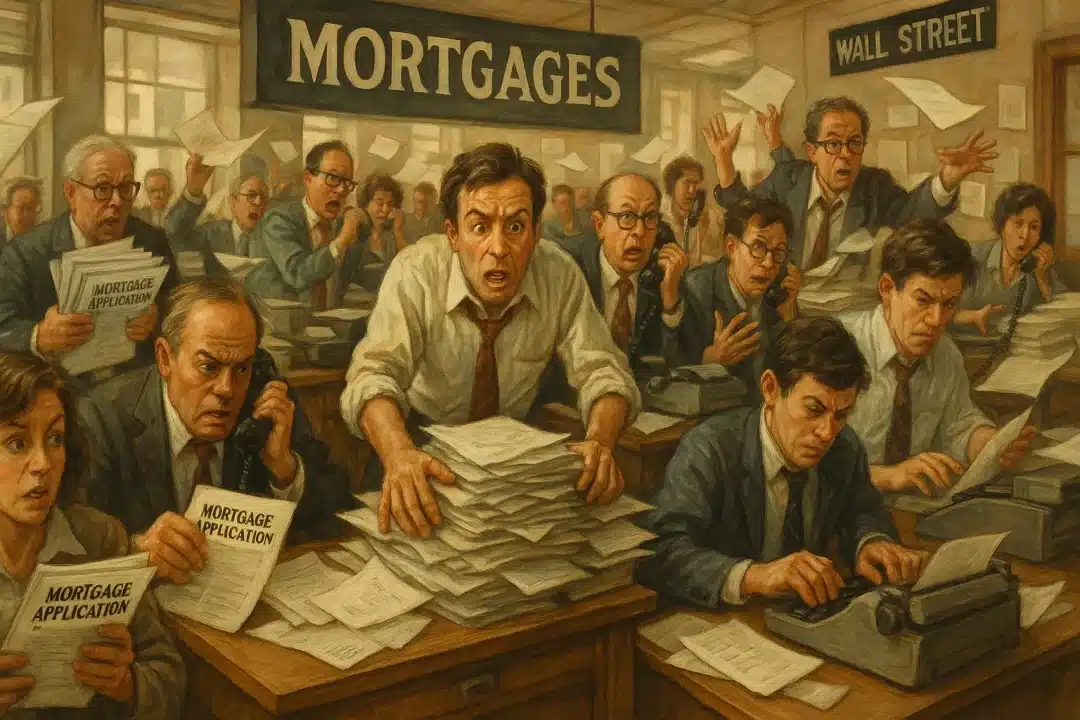

The average interest rate for a 30-year fixed mortgage edged up to 6.94% on Monday, a slight increase of one basis point from both the previous day and last week. This minor fluctuation comes as potential homebuyers and those considering a refinance closely watch for clearer signals from the economy.
Meanwhile, other popular loan types also saw upward movement. The average rate for a 15-year fixed mortgage rose by two basis points to 6.02%, while the 5-year adjustable-rate mortgage (ARM) saw a more significant jump of 13 basis points to 7.12%, according to the latest data from Zillow.
Today’s Mortgage Rate Snapshot
Here’s a look at the national average rates for Monday, June 16, 2025:
- 30-Year Fixed-Rate Mortgage: 6.94% (Up 1 basis point)
- 15-Year Fixed-Rate Mortgage: 6.02% (Up 2 basis points)
- 5-Year ARM: 7.12% (Up 13 basis points)
For government-backed loans, the 30-year fixed FHA rate is currently at 6.89%, and the 30-year fixed VA rate stands at 6.46%. In the jumbo loan market, the 30-year fixed rate is averaging 7.09%.
| Loan Program (Conforming) | Rate | 1-Week Change | APR | 1-Week Change |
|---|---|---|---|---|
| 30-Year Fixed Rate | 6.93% | No Change | 7.39% | No Change |
| 15-Year Fixed Rate | 6.03% | ▲ Up 0.02% | 6.33% | ▲ Up 0.02% |
| 5-Year ARM | 7.13% | ▼ Down 0.21% | 7.51% | ▼ Down 0.36% |
What’s Influencing These Rates?
Today’s subtle rate movements reflect a market in a holding pattern, sensitive to daily economic news. While mortgage rates are not set by the Federal Reserve, they are heavily influenced by the central bank’s monetary policy and the broader economic climate.
The key driver to watch is the 10-year Treasury yield, which mortgage rates tend to follow. Investor confidence, inflation data, and the state of the labor market all play a crucial role in the movement of this benchmark.
Recent reports have shown that while inflation is cooling, it has not yet reached the Federal Reserve’s 2% target. This has led the Fed to maintain its current benchmark rate, but officials have signaled the possibility of rate cuts later in 2025 if economic conditions continue to improve. Until then, mortgage rates are likely to remain volatile, reacting to each new piece of economic data.
Expert Forecast: What’s Next for Borrowers?
Financial experts predict that mortgage rates may gradually decline throughout the remainder of 2025, although a return to the historic lows of recent years is unlikely. Forecasts from organizations like the Mortgage Bankers Association and Fannie Mae suggest rates could settle in the low-to-mid 6% range by the end of the year.
“Softer inflation numbers will help mortgage rates, but just a bit,” says Greg McBride, CFA, Chief Financial Analyst at Bankrate. He notes that “concerns about debt and deficits are keeping a floor under long-term rates.”
What This Means for You: Navigating the Market
For those looking to buy a home or refinance, the current environment requires a strategic approach. Even a small difference in your interest rate can translate to tens of thousands of dollars over the life of a loan.
Here are five tips to secure the best possible rate:
- Strengthen Your Credit Score: A higher credit score signals less risk to lenders, often resulting in a lower interest rate. Review your credit report and take steps to improve it before applying for a loan.
- Shop Around and Compare Lenders: Don’t settle for the first offer you receive. Request official Loan Estimates from at least three different lenders to compare rates and fees.
- Consider Your Down Payment: A larger down payment, ideally 20% or more, can help you qualify for a lower mortgage rate.
- Explore Different Loan Types: While the 30-year fixed mortgage is the most common, it’s not the only option. An ARM may offer a lower initial rate, while a 15-year loan can provide a lower rate overall with a higher monthly payment.
- Lock in Your Rate: When you find a rate you’re comfortable with, ask your lender about a rate lock. This will protect you from potential rate increases while your loan is being processed.
Frequently Asked Questions About Mortgages
What is the difference between an interest rate and an APR? The interest rate is the cost of borrowing the principal loan amount. The Annual Percentage Rate (APR) is a broader measure of the loan’s cost, including the interest rate plus other lender fees, such as origination fees and discount points.
How are mortgage rates determined? Mortgage rates are influenced by a complex mix of factors, including the 10-year Treasury yield, the Federal Reserve’s policies, the current state of the economy, inflation, and the overall health of the housing market. Individual borrower qualifications, such as credit score and down payment size, also play a significant role.
When should I lock in my mortgage rate? If you are comfortable with the rate and monthly payment offered, it is generally a good idea to lock it in, especially in a volatile market. A rate lock protects you from future increases while your loan is finalized, which typically takes 30 to 60 days.







